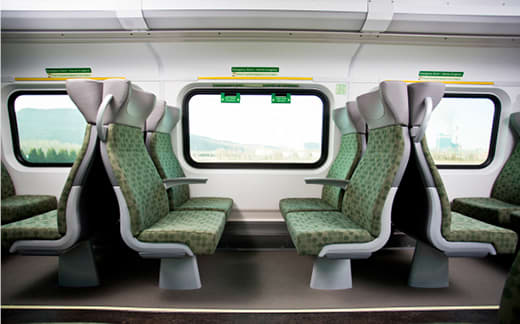Our Vehicles
Our new buses and train cars are in service to make your trips more accessible and comfortable.Our Vehicles
Our new buses and train cars are in service to make your trips more accessible and comfortable.- About GO
- Our Vehicles
Our Train Cars
Along with giving you more ways to get around and a more comfortable ride, our train cars give you:
- Lots of leg room, and more space between and underneath seats for bags and luggage.
- Thick cushions on the seats and head rests, and moveable arm rests.
- Washrooms with electric hand dryers, and touchless faucets and soap dispensers.
- Additional floor heat to keep temperatures warmer during the winter months.
- Floors that decrease the train's noise, for a quieter ride.
- Soft lighting that is easier on your eyes.
Our Double-Decker Buses
Our low-floor, low-height double-deckers are 39 cm lower than our first generation of double-decker buses, and 24 cm lower than the second generation. Our buses can clear more bridges and trees, and as a result, travel on more routes. The new double-decker buses give you:
- Low floors, and a longer, gradual ramp for easy boarding and exiting.
- Two wide areas for maneuvering with mobility devices.
- Eight electrical outlets (4 on each level), with 2 in the wheeled mobility device area.
- Automated next-stop announcements and visual displays for consistent and timely information.
- Space to store your luggage.
- Reclining seats on the lower floor.
- Tinted windows for increased UV protection and temperature control.
Our Single-Decker Buses
Our single-decker buses offer a smooth, convenient ride for all your long-distance travel needs.
They are built for comfort and accessibility, with:
- Climate control and tinted windows for UV protection.
- A lift and space for two wheeled mobility aids.
- A lowering feature to make boarding and exiting easier.
- A front bike rack that holds two bicycles.
- Automated next-stop announcements.
- Seats that recline, have armrests, reading lights, power outlets, stop request buttons, air-flow controls and overhead parcel storage.


